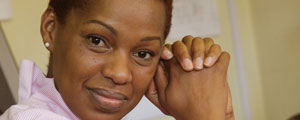
“How do you solve a problem like Maria? How do you catch a cloud and pin it down? How do you find a word that means Maria? A flibbertajibbit? A willow-the-whisp? A clown?” so goes the song from the famous Rogers and Hammerstein musical, The Sound of Music.
Report by Thembe Sachikonye
It’s such a catchy tune, and I wonder whether I am the only one who regularly yields to the temptation of inserting names of high-profile individuals, issues or even countries in the place of Maria’s name; you know, as in “How do you solve a problem like Zimbabwe . . . ? How do you solve a problem like Chiyadzwa . . . ?” Or even “How do you solve a problem like Locardia?” Go on and try it, its fun!
Given that in life we encounter so many problems of different kinds and it seems, in fact, that from the time we are born we are solving one problem or another.
It’s surprising that we don’t have a much more positive and can-do attitude to problem-solving by the time we are adults.
Think about it: when a baby feels hungry, that’s a problem.
He learns that when he cries, something is going to be inserted into his mouth and that something is most likely to be food. Problem solved!
As he gets older, he encounters new problems. For instance, he wants to get from point A to point B and he does so first by rolling, shuffling, then crawling and eventually walking.
- Chamisa under fire over US$120K donation
- Mavhunga puts DeMbare into Chibuku quarterfinals
- Pension funds bet on Cabora Bassa oilfields
- Councils defy govt fire tender directive
Keep Reading
All along the way he is encountering obstacles such as furniture, fear, and adults and he somehow figures out ways to work around them to gain the independence he desires.
Why then when we have this lifelong track record of successful problem solving behind us do we face challenges with less of a degree of confidence in our abilities as we get older?
Perhaps it’s because our track record becomes less and less sterling as we get older? Or perhaps it’s because the problems become more and more complex.
Whatever the case, one of the most important elements of successful problem solving is attitude.
Paul J Meyer, the Author of Attitude is Everything, describes attitude as a habit of thought.
The founder of the personal development industry, Meyer says:
“Who you are is a function of specific choices that you have made.
“Who you are is not determined by how you look, where you live, or who your parents were. You are where you are and what you are because of the dominating thoughts that occupy your mind.
“You have the power to change, to be and to do, anything . . . so use it!”
Seeing problems as opportunities is an attitude that greatly enhances one’s ability to solve them.
Many years ago I worked as a junior accounts executive in an advertising agency that was undergoing tremendous internal challenges and going to work every day was proving to be a drag.
On the brink of quitting the job, I spent some time relating the complexities of my situation to a friend, who simply said: “But I see this as an opportunity to shine.”
That advice is something I will always cherish because in that split second I began to understand the difference between how winners and losers think.
As Richard Bach says: “Every problem has a gift for you in its hands.”
But beyond the attitude with which we face problems, there is also the matter of determining what the problem is.
The more complex the problem, the more likely we are to misdiagnose it, so that instead of looking perhaps at an environment-related solution, we look for a solution in the area of skills.
A clear definition of what the problem is will go a long way towards helping to find ways to resolve it.
It often happens that as you articulate the problem, you anaylse its various elements and the solutions become self evident.
Problem solving is a skill, and as with any skill, you become better at it the more you practice.
Norman Vincent Peale says: “Problems are to the mind what exercise is to the muscles, they toughen and make strong.”
So theoretically the more problems you solve, the better you get at solving them.
Sometimes a problem seems so big and so difficult that we are overwhelmed and cannot even see where to begin.
When this happens, you can reduce anxiety by breaking the problem down into smaller pieces and then tackling those one at a time.
So we begin to see that the real problem with a problem isn’t, in fact, the problem itself.
The real problem with problems is how we see them and how we move on from there.
- Thembe Khumalo Sachikonye writes in her personal capacity. Readers’ comments can be sent to [email protected]. Follow Thembe on Twitter www.twitter/localdrummer or visit her facebook page www.facebook.com/pages/local-drummer











